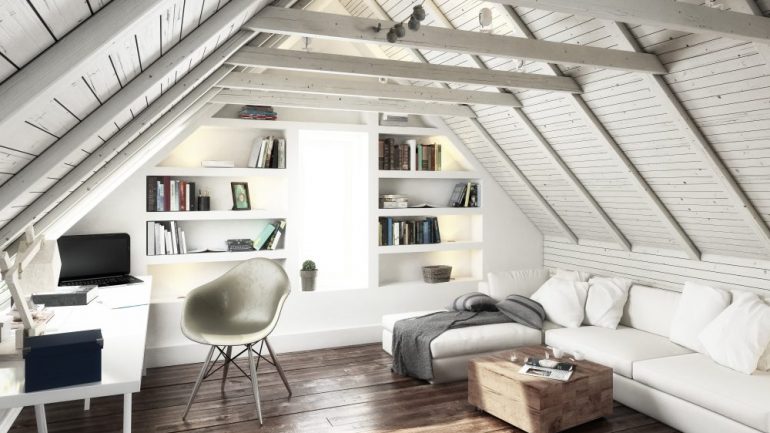When it comes to adding living space to a home, consider thinking up, not out. Attic conversions can make for fun and private retreats, but require some careful planning. Here’s what to consider.
Meeting building codes
Building codes are written to ensure safe structures. Complying with them is particularly important with an attic conversion. Your first call should be to a structural engineer or an architect for professional advice and to have plans drawn for submission to city code authorities for building permits.
The plans must address several issues. The very first question is whether there is sufficient suitable space in the attic. Most building codes for attic conversion require at least seven feet of ceiling height and 70 square feet of floor space, with at least one side being seven feet wide.
The weight of walls, flooring and furnishings far surpasses that of the holiday decorations and off-season clothes you may have stored in the attic, so the attic floor rafters must be big enough to support the weight of the conversion and will need reinforcing if they cannot. The plans you submit to code authorities must also address how you’ll supply electricity, heating and air-conditioning, and possibly plumbing to the space.
If you plan to put a bedroom in the converted attic, most building codes require two means of egress: a door and a window, or two doors. If you’re planning a window, include a rollout ladder to use in case of emergencies.
When it comes to homeowners associations, you may have an easier time getting approval for an attic conversion than for adding on a room, where required setbacks from property lines can be an issue.
How will the attic be accessed?
If the attic space is on the same level as existing upstairs living areas, a simple door cut through a wall may work. You will need stairs if the access requires going up. If possible, build stairs in a closet space to minimize staircase encroachment into existing living space. If you don’t have room for a straight staircase, a switchback design might be the solution. A spiral staircase has the smallest footprint, but is more expensive and makes moving furnishings into the new space difficult.
Plumbing, electrical and climate control
If you’re planning to add a bathroom in the attic conversion, try to position it so that plumbing is close enough to existing water and sewage lines to tie in easily.
You’ll need an electrician, not just for wiring, but to evaluate the sufficiency of existing electrical breakers for the increased load and to add them as needed. Be sure to plan electrical outlet placement to accommodate how the new space will be used. Smoke and carbon monoxide detectors will need to be wired in as well. Keep in mind you’ll also need Wi-Fi and cable TV connections.
A heating and air conditioning professional should determine whether your current system has the capacity to supply the new attic space. Consider a zoned system for the converted space with its own thermostat.
Insulation will be vital behind all Sheetrock or paneled walls. Between the ceiling Sheetrock and the overhead rafters, spray-foam insulation provides the most protection from heat transference.
Lighting the attic
Natural lighting through a dormer or skylight can help prevent a sense of claustrophobia. Recessed ceiling lights using LED bulbs provide illumination without heat. Painting the walls and ceiling a shade of white keeps the space bright and airy.
Outfitting your new space
Attic bedrooms provide a special kind of get-away privacy. Kids love twin beds in an attic bedroom. You can place them on opposite walls or end-to-end along one wall. An attic office provides a place of solitude perfect for good concentration. Attic conversions are also great for game rooms, home theaters or workout areas.
Noise will transfer easily to the living spaces below, so consider carpeting the attic floor or, if you choose hard surface flooring, using plush area rugs.
Cost of a conversion
Done from start to finish by professional contractors, an attic conversion can cost $75,000. If you have do-it-yourself skills, you can save a lot, but be sure to have professionals do all the structural evaluation and work requiring licenses.
Related – The Ups and Downs of Multiple Staircases


